 |
 |
 |
Official Name: Romania
Location:
Romania is situated in the southeastern part of Central Europe and shares borders with Hungary to the northwest, Ex-Yugoslavia
to the southwest, Bulgaria to the south, the Black Sea and Ukraine to the southeast and to the north and the Republic of Moldova
to the east.
Time Zone: GMT + 2
Area: 237,502 sq. km
Form of Government
Republic with two legislative bodies:Senate and Chamber of Deputies
Population: 21,700,000 (2002). There are 263 towns in Romania out of which 25 have a population of more than 100,000 while 8 cities count
more than 300,000 inhabitants. 45 % of Romanians live in rural areas: 2,868 communes and 13,285 villages. The administrative
divisions are called "judete" (counties). There are 41 counties in Romania.
Capital: Bucharest (Bucuresti) has the
status of a county.
Language: Romanian, a Latin based language which is a continuation of the Latin
spoken in ancient times in Dacia and Moesia ? the eastern provinces of the Roman Empire.
A 31-letter Latin alphabet is
in use.
Ethnic minorities (Hungarian and German) use their own languages in school and civil administration.
Literacy
rate in Romania is 98%.
Ethnic Groups: Romanian 89%, Hungarian 7.5%, Gipsy 1.9%, German, Other 1.6%
Religions: Christian Orthodox 87%, Roman Catholic 5%, Protestant 5%, Jewish
Official Language: Romanian
Climate
Romania has a temperate climate with four distinct seasons.
Spring
is pleasant with cool mornings and nights and warm days.
Summer is quite warm, with extended sunny days. The
hottest areas in summer are the lowlands in southern and eastern Romania where 100 F is often reached in July and August.
Temperatures are always cooler in the mountains.
Autumn is dry and cool, with fields and trees producing colorful
foliage. Winters can be cold, especially in the mountains. While not the rule, abundant snowfalls may occur
throughout the country, from December to mid-March. Warmest month: July
Coldest month: January
Record
High Temperature: 44.5?C (112?F) - August 10, 1951 South-Eastern Romania
Record Low Temperature: -38.5?C (-37.3?F)
- January 24, 1942 (Central Romania).
When to come
Romania is a year-round tourist destination. From the end of April to the end of October are the most popular sightseeing
periods, with generally mild and pleasant temperatures.
Summers can be hot especially in Southern
Romania, including Bucharest, but along the Black Sea
Coast, sea breezes offer moderate
temperatures. The mountain resorts and higher elevation areas are warm and pleasant during summer.
Winters can be very cold, especially in the mountains and snow is common
throughout the country from December to mid March. Skiers can usually enjoy their favorite sport in the Carpathian Mountain resorts from December until April.
Travel
Formalities
Traveling to Romania is as easy as traveling to any other European destination. Romania
offers a rich tapestry of tourist attractions, which are unique in Europe.
Even if Romania is not your main travel
destination in Europe, a two or three-day ad-on trip is well worthwhile. Although some remote areas in Romania only offer
mid-scale or budget accommodations and basic tourist facilities those visiting the country will always encounter friendly
people, wonderful sights and affordable prices.
American and Canadian
citizens as well as citizens of most European countries do not need an entry visa to visit Romania (for stays up to 90 - ninety - days).
However, a valid
passport is required for all international visitors except for citizens of the countries of the European Union who can enter
Romania with
their Identity Card.
No vaccinations are
required/ necessary.
There is no Entry
or Departure Tax.
Extensions of stays
beyond 90 days can be obtained from the local passport office.
Citizens of other
countries should check the visa regulations that apply to them with the nearest Romanian diplomatic office.
For more visa information
and a list of Romanian diplomatic offices abroad, please, visit www.mae.ro.
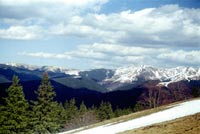
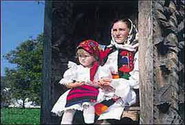
People
Foreign visitors consider Romanians among the friendliest and most hospitable
people on earth. Romanians are by nature fun loving, warm, hospitable, playful, with an innate sense of humor.
Romania
is associated with big names in arts and sports:
Constantin Brancusi — one of the most acclaimed modern sculptors.
Angela
Gheorghiu, one of the world's greatest opera soprano - www.angelagheorghiu.com
Alexandra Nechita — a young Romanian painter living in California,
known for her distinct style. For more info about Alexandra and her art please visit: www.iapart.com
Ilie Nastase — U.S. Open and Roland Garos winner, is still one
of crowd's favorites at the U.S. Open.
Nadia Comaneci — the Olympic champion gymnast, saluted by people
everywhere.
Other world renowned Romanian artists include the writer Eugen Ionesco, pan flute virtuoso Gheorghe
Zamfir, piano player Radu Lupu and musician George Enescu.
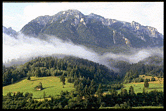
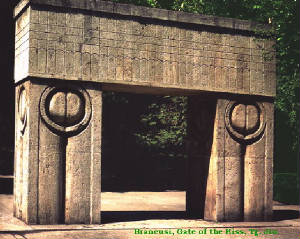
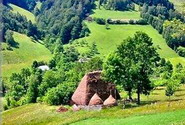

|
|
 |
 |
|
|
 |
|
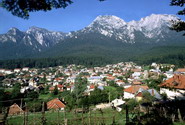
Money:
Romania's currency is Leu (plural "Lei").
As of July 1, 2005, Romania has dropped four zeros from its national currency. Yesterday's 30,000 (old) Romanian
lei (ROL) per U.S. dollar now equal 3.00 (new) lei (RON) to one dollar - three lei (lay) and 0 bani (bah-nee).
Both old and new coins and banknotes will be in circulation until December 31, 2006, when the old currency will be
withdrawn.
New banknotes have ben issued in 1, 5, 10, 50, 100 and 500 lei denominations, and coins in 1, 5, 10
and 50 bani pieces.
Old Romanian Lei Notes are issued in the following amounts: 2,000, 10,000, 50,000, 100,000,
500,000 and 1,000,000 Lei.
Coins come in denominations of 1, 100, 500, 1,000 and 5,000 Lei.
Foreign currencies may
be exchanged at banks or authorized exchange offices (called: "casa de schimb" or "birou de schimb valutar"). International
airports and larger hotels also offer currency exchange services.
Exchange rates** for foreign currencies, valid on March
30, 2006:
one US dollar = 2.94 'New' Lei (29,418 'old' lei)
one Canadian dollar = 2.50 'New' Lei (25,056
'old' lei)
one British Pound = 5.11 'New' Lei (51,122 'old' lei)
one Australian dollar = 2.07 'New' Lei
(20,709 'old' lei)
one Euro = 3.53 'New' Lei (35,300 'old' lei)
Note: Although black market rates may seem
good, please remember that it is illegal and you can be easily cheated.
ATM
(Bancomat):
ATM machines are
available at main banks and at airports and shopping centers. Do not expect to find ATMs in remote areas or villages.
Credit
cards:
Major credit cards
including American Express, Mastercard and Visa are accepted in large hotels, travel companies and stores in the main cities.
However, credit cards are unlikely to prove useful in small towns or away from tourist areas.
Travelers'
Checks:
Preferably in Euros
or US dollars , Travelers' Checks can be cashed in large banks, some hotels and selected exchange offices but most of them
charge considerable commissions. Do not count on cashing such checks outside Bucharest and a few other major cities. For travel around the country it is a good idea to carry cash. Small stores and
restaurants might accept
Electricity:
Electrical current
is 220 V; 50 cycles. Outlets take plugs with two round prongs. A plug & power adapter is necessary for most appliances
requiring 110 V.
Health
No immunizations or unusual health precautions are necessary. Romania has
no infectious risks and there are no poisonous insects. There is no malaria in Romania. During the summer months there are
mosquitoes in the Danube Delta and some low-lying regions. For your comfort take some mosquito repellent when traveling during
summer season. Tap water is safe to drink but if you are in doubt buy bottled water. Romania is home to more that 1/3 of the
natural mineral springs in Europe. Bottled water is inexpensive and widely available. Some Romanian bottled water is rated
the best in the world for purity and taste and is exported to many foreign countries. Naturally, we hope that you will never
need to use any medical facilities. However, Romania has good medical facilities and Romanian doctors are known for their
high standard of medical education.
Disabled visitors
Access for people with
disabilities to Romania's tourist attractions has improved in recent years, and it remains a priority. However, it is advisable
to check with all service providers prior to your visit, ensuring that they are able to meet your particular needs. Advance
notice and reservations will also help ensure that you receive the best possible assistance.
Travel with Pets
- Documents needed to take your pet into Romania include a Veterinary Health Certificate and a proof of rabies vaccination,
not older than six months. Translation of documents is not needed if they are in English, French or German.
- There are no specific customs regarding pets.
- Pets are allowed on trains and buses. However, large dogs must wear a muzzle.
- Each hotel or restaurant has its own pet policy. In general pets are allowed in hotels and restaurants. Hotels usually
charge a little bit extra for guests bringing their pets.
- Romanians love pets and please don't be surprised or offended if someone you don't know tries to pet your dog or cat without
asking permission.
Festivals
& Events
Major
festivals throughout the year include:
June:
The Traditional Crafts Fair - Crafts enthusiasts
from all over Romania gather at the Village Museum in Bucharest to offer free demonstrations of traditional woodcarving, textile weaving and embroidering, pottery molding,
egg painting and more.
July: The Old Bucharest -Celebration
of the city as it was 150 years ago. Parade of 1800s costumes, horse-drawn carriages, traditional food, music and special
performances.
Medieval
Days. Three-day celebration of medieval arts, crafts, music. Recreating the atmosphere of medieval Sighişoara using medieval
arts, music, and crafts.
The
Maidens' Fair (Tārgul de Fete) Traditional matchmaking festival where villagers in traditional costume walk up to Găina Mountain for dancing,
feasting and choosing a mate.
August: Dance at Prislop (Hora de la Prislop)- Traditional celebration
of ties among three of Romania's main regions: Transylvania, Moldova and Maramureş; villagers parade in traditional costume
to Prislop Pass in the Carpathian Mountains, then participate in traditional dances, singing and feasting.
Romania's
Folk Art Festival - Initiation in folk art creation (pottery molding, textile embroidering, woodcarving and more) offered,
for free, by preeminent folk artists to those interested in traditional crafts.
September
"George Enescu" Music International Competition
Sambra Oilor-A festival marking the return
of the sheep herds from the Mountains.
October: Halloween in Transylvania- Tours shows and celebrations following the footsteps of Bram Stoker's novel character, Count Dracula.
December: Christmas Traditions Festival.
Of
all the events enjoyed during the year, folk festivals are the most spectacular. While some festival dates remain fixed, others
change year by year so it's wise to check before your trip.
|
|
